Microsoft LD-1W Bluetooth GPS Receiver User Manual LD1W Ilmari legal
Microsoft Mobile Oy Bluetooth GPS Receiver LD1W Ilmari legal
User Manual
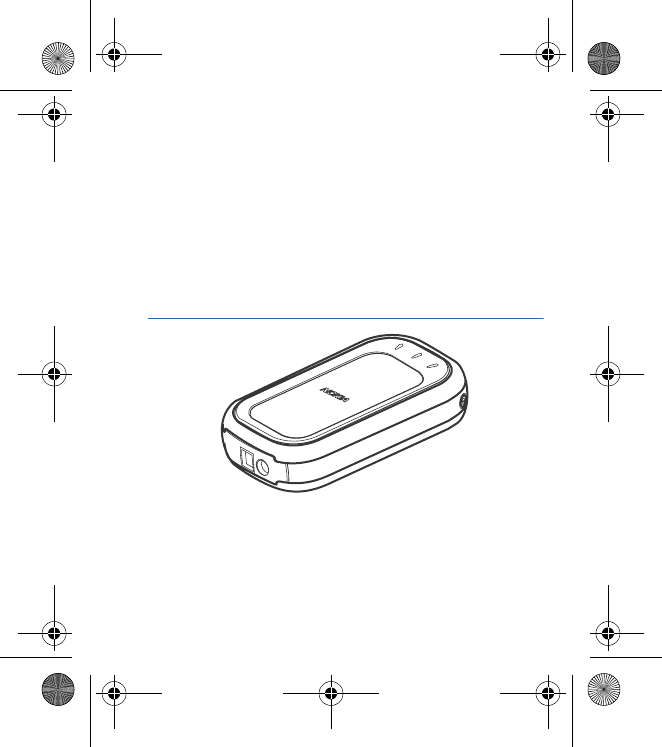
User’s Guide for the Nokia
Wireless GPS Module
(LD-1W)
Part number
Issue 1
LD1W_Ilmari_legal.fm Page 1 Thursday, October 7, 2004 9:50 AM
LEGAL CHECK
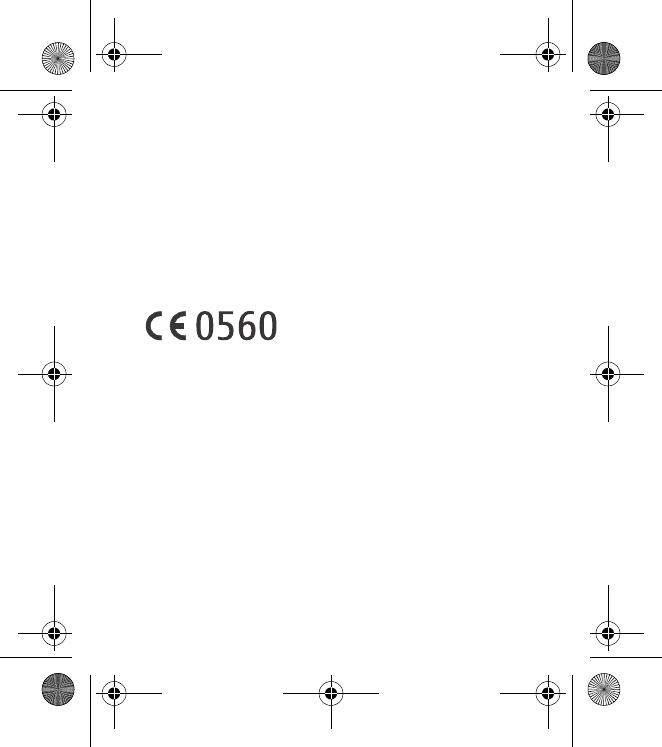
DECLARATION OF CONFORMITY
We, NOKIA CORPORATION, declare under our sole responsibility that the
product LD-1W is in conformity with the provisions of the following
Council Directive: 1999/5/EC.
A copy of the Declaration of Conformity can be found from
http://www.nokia.com/phones/declaration_of_conformity/.
Copyright © 2004 Nokia. All rights reserved.
Reproduction, transfer, distribution or storage of part or all of the
contents in this document in any form without the prior written
permission of Nokia is prohibited.
Nokia is a registered trademark of Nokia Corporation. Other product and
company names mentioned herein may be trademarks or tradenames of
their respective owners.
Bluetooth is a registered trademark of Bluetooth SIG, Inc.
Nokia operates a policy of continuous development. Nokia reserves the
right to make changes and improvements to any of the products described
in this document without prior notice.
LD1W_Ilmari_legal.fm Page 2 Thursday, October 7, 2004 9:50 AM
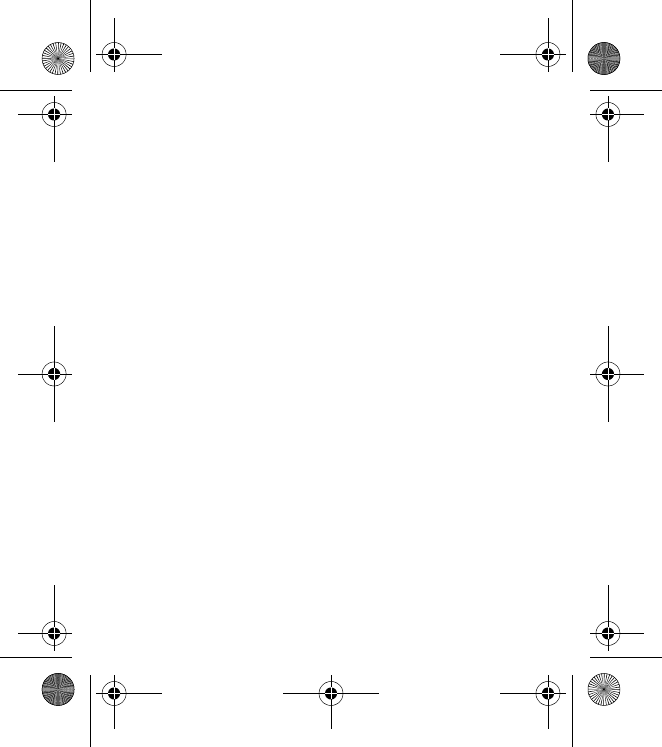
Under no circumstances shall Nokia be responsible for any loss of data or
income or any special, incidental, consequential or indirect damages
howsoever caused.
The contents of this document are provided "as is". Except as required by
applicable law, no warranties of any kind, either express or implied,
including, but not limited to, the implied warranties of merchantability
and fitness for a particular purpose, are made in relation to the accuracy,
reliability or contents of this document. Nokia reserves the right to revise
this document or withdraw it at any time without prior notice.
The availability of particular products may vary by region. Please check
with the Nokia dealer nearest to you.
Part number/Issue 1
LD1W_Ilmari_legal.fm Page 3 Thursday, October 7, 2004 9:50 AM
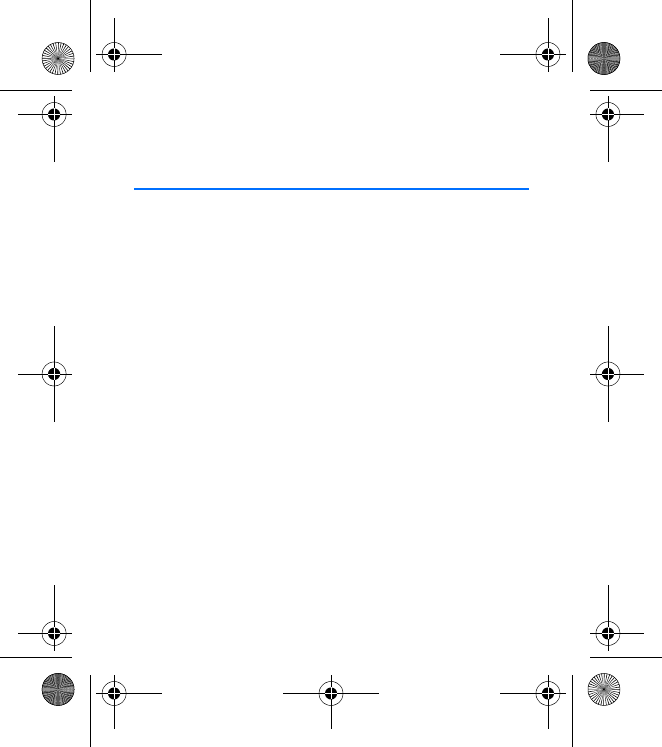
Contents
4
Contents
For your safety ............................................................. 6
1.Introduction.............................................................. 8
Global Positioning System................................................................... 8
Bluetooth wireless technology......................................................... 11
Bluetooth passcode............................................................................. 11
External antenna.................................................................................. 11
2.Getting started....................................................... 12
Overview................................................................................................. 12
Batteries and chargers........................................................................ 14
Installing the battery.......................................................................... 15
Charging the battery........................................................................... 17
Pairing the GPS module with a compatible phone.................... 18
3.Using the GPS module........................................... 20
Power key functions............................................................................ 20
Carrying the GPS module................................................................... 21
Using the GPS module with several paired phones ................... 22
Disconnecting and reconnecting the GPS module..................... 23
LD1W_Ilmari_legal.fm Page 4 Thursday, October 7, 2004 9:50 AM
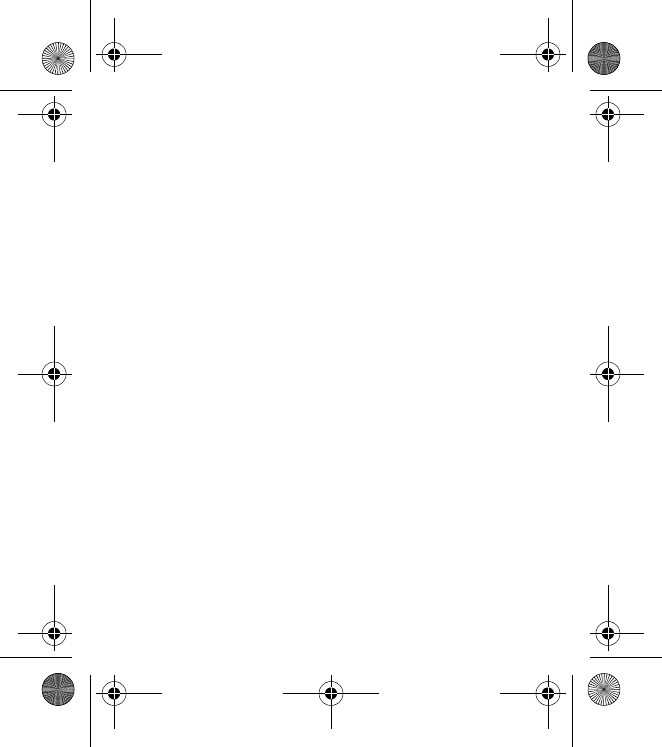
Contents
5
Resetting the GPS module................................................................ 24
Troubleshooting................................................................................... 25
4.Battery information................................................ 26
Care and maintenance................................................ 29
LD1W_Ilmari_legal.fm Page 5 Thursday, October 7, 2004 9:50 AM
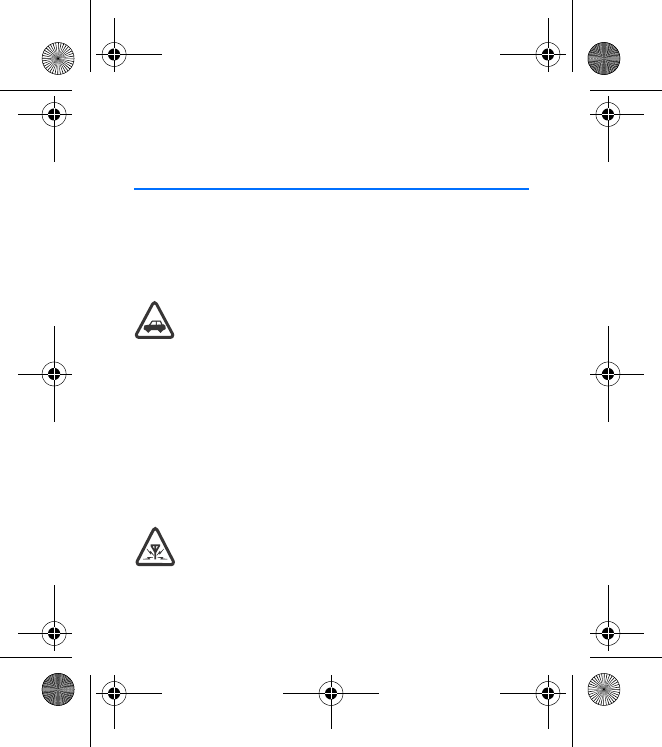
For your safety
6
For your safety
Read these simple guidelines. Breaking the rules may be
dangerous or illegal. Further detailed information is given in this
user’s guide.
ROAD SAFETY COMES FIRST
Remember that the safety of operating a motor vehicle
in traffic requires the full attention of all motorists.
Only use your Nokia Wireless GPS Module (LD-1W) if
traffic conditions permit safe use and check if local
laws/regulations restrict the use of mobile devices
while driving.
When using the GPS module in a mobile environment
place it so that it does not disrupt the normal operation
of the vehicle. Make sure you fasten the GPS module
properly to prevent accidental movement of it.
INTERFERENCE
All wireless devices may be susceptible to interference,
which could affect performance.
LD1W_Ilmari_legal.fm Page 6 Thursday, October 7, 2004 9:50 AM
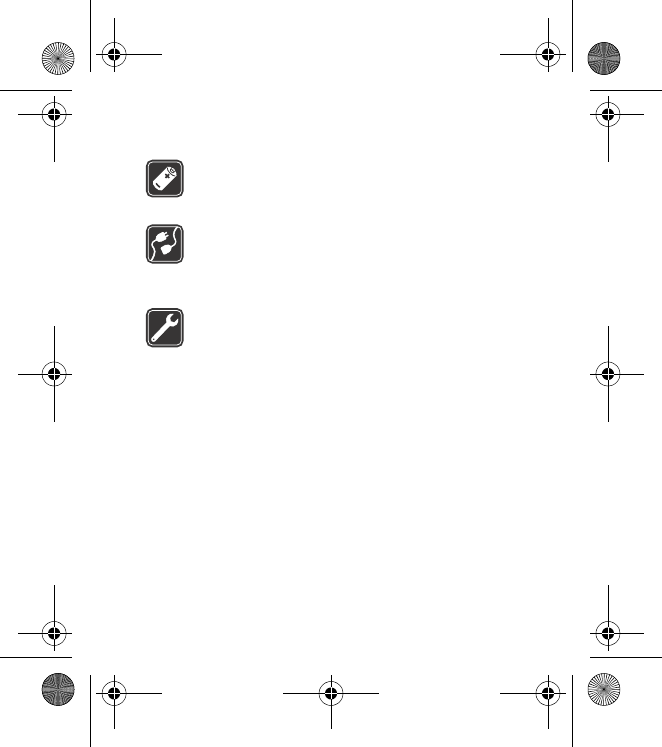
For your safety
7
BATTERIES AND CHARGERS
Use only approved batteries and chargers. Do not
connect incompatible products.
CONNECTING TO OTHER DEVICES
When connecting to any other device, read the
relevant user’s guide for detailed safety instructions.
Do not connect incompatible products.
QUALIFIED SERVICE
Only qualified personnel may repair this device.
LD1W_Ilmari_legal.fm Page 7 Thursday, October 7, 2004 9:50 AM
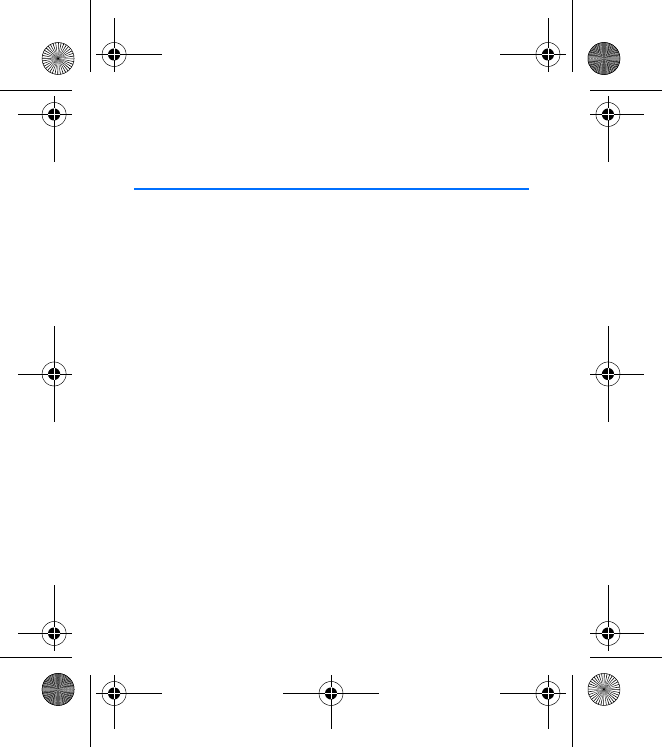
Introduction
8
1. Introduction
With the help of the Nokia Wireless GPS Module you can
determine your current position and direction easily. The
GPS module is a battery operated device that uses
Bluetooth technology to communicate positioning
information to compatible mobile phones, PCs, PDAs and
other devices.
Read this user’s guide carefully before using the GPS
module. Check also http://www.nokia.com/support or
your local Nokia Web site for the latest version of this
guide, additional information, downloads, and services
related to your Nokia product.
■Global Positioning System
The Global Positioning System (GPS) is a worldwide radio
navigation system that includes 24 satellites and their
LD1W_Ilmari_legal.fm Page 8 Thursday, October 7, 2004 9:50 AM
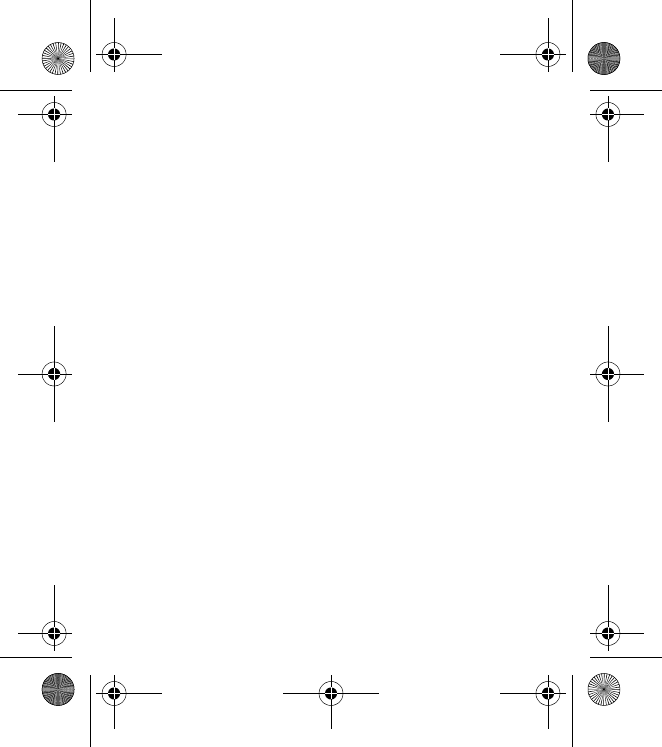
Introduction
9
ground stations that monitor the operation of the
satellites.
A GPS terminal (such as the Nokia Wireless GPS Module)
receives low-power radio signals from the satellites and
measures the travel time of the signal. From the travel
time, the GPS terminal can calculate its location to the
accuracy of +/- 25 metres. In optimal conditions, the
accuracy may be within a few metres.
The accuracy can be affected by poor satellite geometry.
The more satellites the GPS module can "see", the better
the accuracy. The internal antenna of the GPS module,
which is located on the same side as the Nokia logo,
should be facing upwards for proper functioning. Note
also that some car windshields and windows may contain
metal, for example, for heat reflection or defogging
purposes. This may block or attenuate the satellite signal.
The availability and quality of GPS signals may also be
affected by buildings and natural obstacles as well as
weather conditions. Therefore, the GPS should not be
LD1W_Ilmari_legal.fm Page 9 Thursday, October 7, 2004 9:50 AM
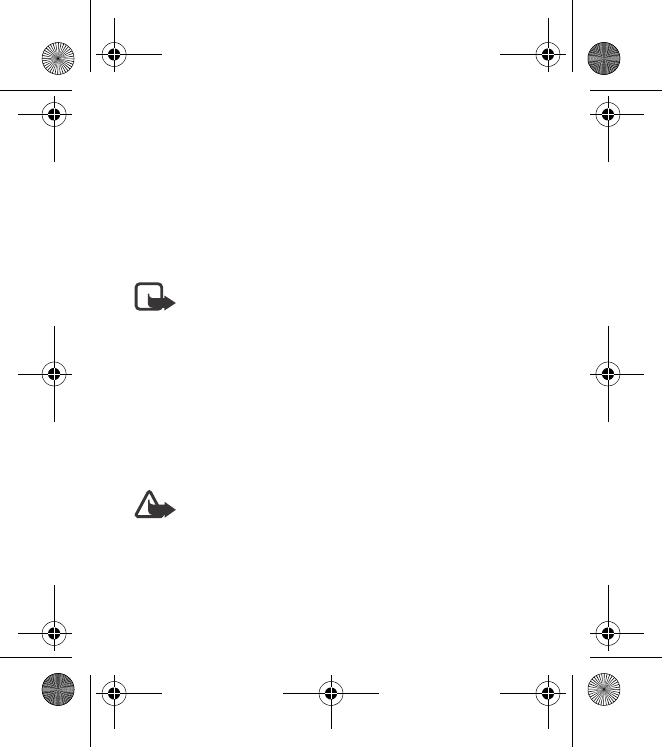
Introduction
10
used for precise location measurement, and you should
never rely solely on location data from the GPS module.
In addition, the GPS determines your direction on the
basis of your movement. Therefore, the GPS cannot
detect which way you are facing if you are not moving.
Note: The Global Positioning System is operated
by the United States government, which is solely
responsible for accuracy and maintenance of the
system. The accuracy of location data can be
affected by adjustments to GPS satellites made
by the United States government and is subject
to change with the United States Department of
Defense civil GPS policy and the Federal
Radionavigation Plan.
Warning! This GPS module does not support
emergency location service (E911).
LD1W_Ilmari_legal.fm Page 10 Thursday, October 7, 2004 9:50 AM
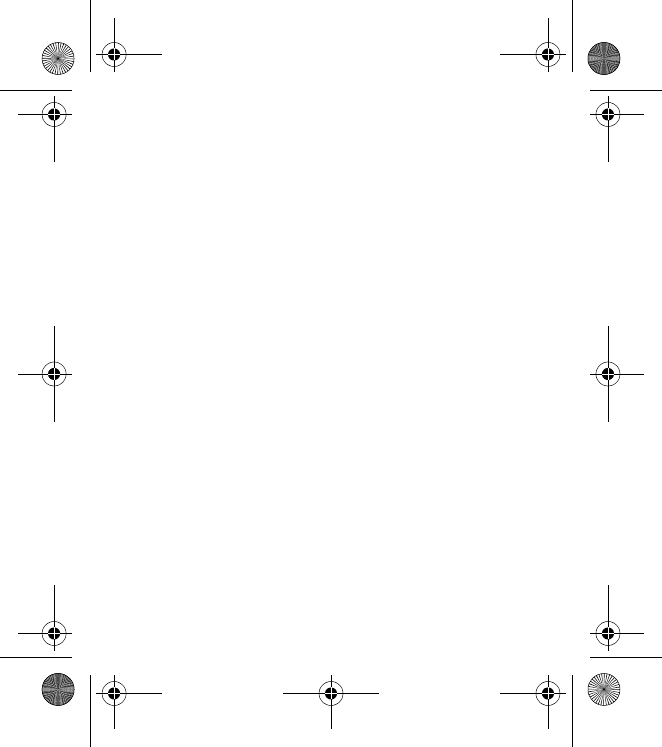
Introduction
11
■Bluetooth wireless technology
The Bluetooth technology makes it possible to connect
compatible communication devices without using cables.
Please refer to the user’s guide of your phone for a more
detailed description of Bluetooth technology.
■Bluetooth passcode
You need a Bluetooth passcode for pairing the GPS
module with a compatible device. The passcode is 0000.
■External antenna
Sometimes the performance of the GPS module may be
unsatisfactory because of nearby obstacles blocking the
satellite signals. The performance of the GPS module may
be improved by using an external antenna with a male
MCX-connector and an input voltage of 3V.
Plug the external antenna into its connector (5) on the
GPS module. See Overview starting from page 12.
LD1W_Ilmari_legal.fm Page 11 Thursday, October 7, 2004 9:50 AM
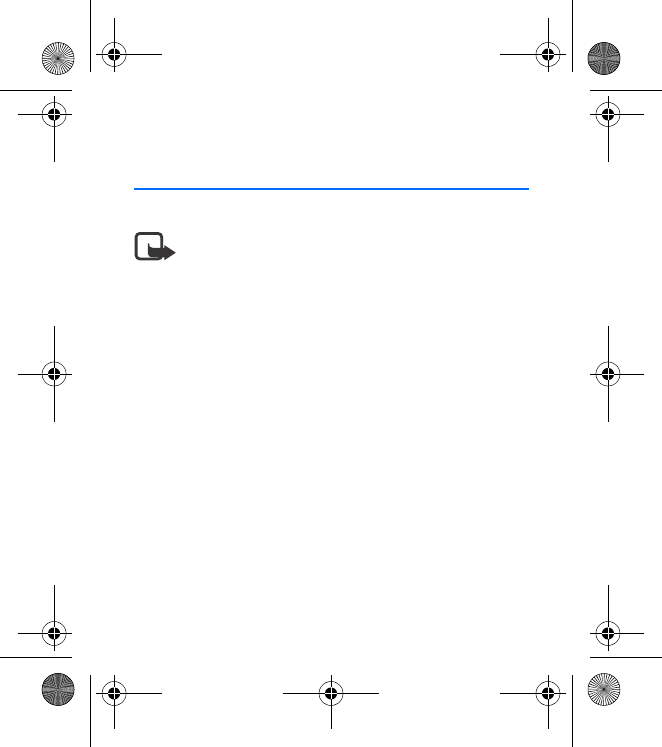
Getting started
12
2. Getting started
Note: The use of wireless devices may be
restricted in some situations. Observe any
restrictions and obey all signs and instructions
concerning the use of wireless devices.
■Overview
The GPS Module contains the following parts:
1- Power on/off key: Switches the GPS module on and
off, or resets the Bluetooth section of the GPS module.
2 - Release button: Opens the back cover.
3 - Indicator lights: Display the current status of the
GPS module. The indicator lights are red/green, blue and
white. Red and green lights indicate the status of the
battery and charging, or resetting the module. The blue
light indicates an active Bluetooth connection, and the
LD1W_Ilmari_legal.fm Page 12 Thursday, October 7, 2004 9:50 AM
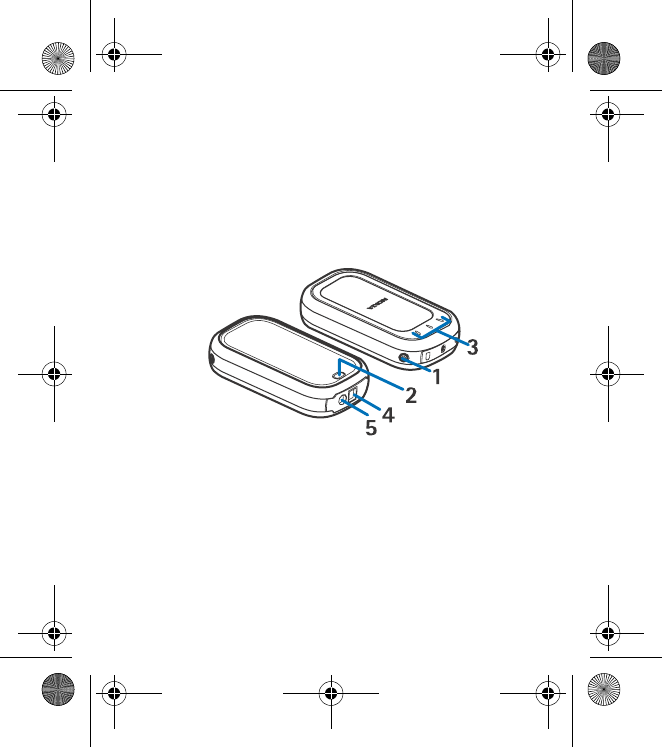
Getting started
13
white light shows that the GPS module is receiving
satellite data and is able to determine its position.
4 - Connector for a compatible charger
5 - Connector for an external antenna
Before you can start using the GPS module, you must:
• install a compatible software application on the
phone,
• charge the battery of the GPS module fully, and
• pair the compatible phone with the GPS module.
LD1W_Ilmari_legal.fm Page 13 Thursday, October 7, 2004 9:50 AM
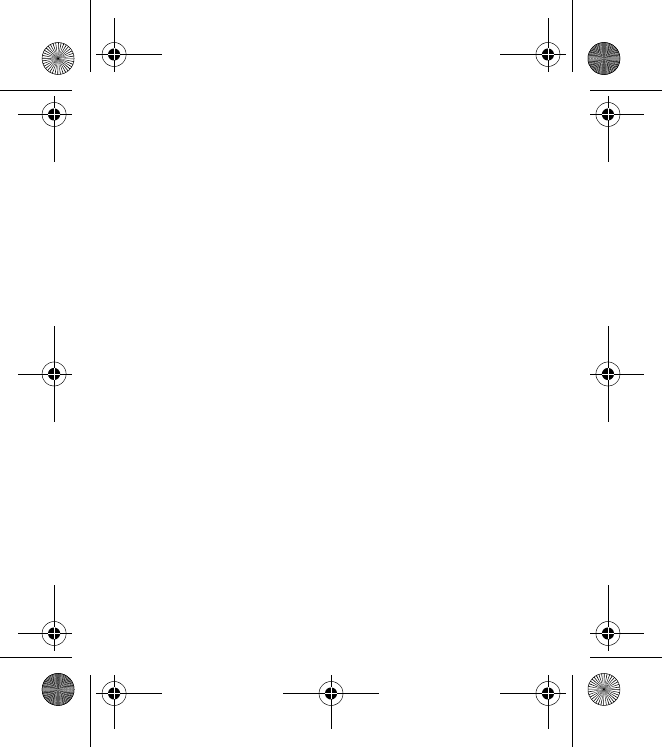
Getting started
14
Note also that some Nokia phone models (e.g. 9500
and 9300) have a Location Privacy setting in the
Control Panel menu. This setting must be set to
"Accept all" in order to provide GPS location data to
software applications.
■Batteries and chargers
The GPS module has a removable and rechargeable BL-5C
battery. If you need to replace the battery, you can
purchase a new one from your local dealer.
Check the model number of any charger before using it
with this product. The following chargers are intended for
use with the GPS module:
• Mains chargers: AC-1, ACP-8, ACP-9, ACP-12
• Mobile chargers: LCH-8, LCH-9, LCH-12.
LD1W_Ilmari_legal.fm Page 14 Thursday, October 7, 2004 9:50 AM
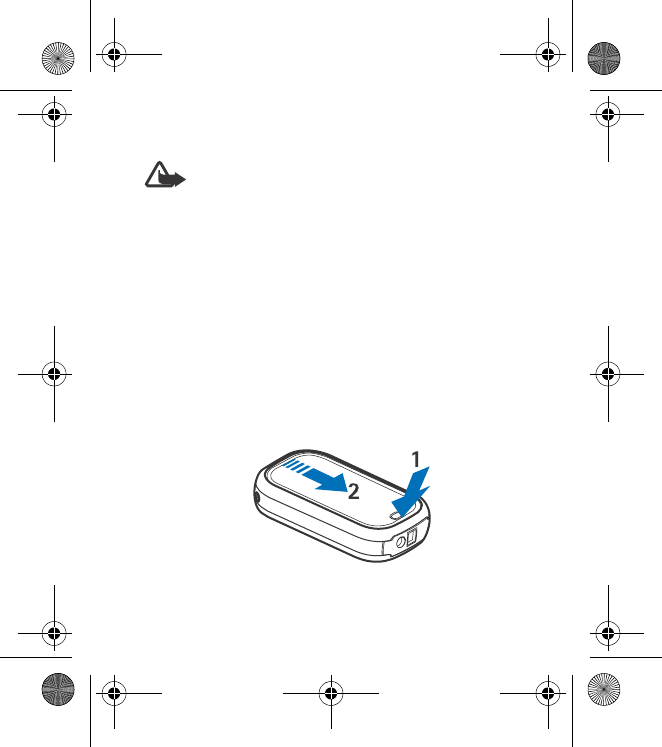
Getting started
15
Warning! Use only batteries and chargers
approved by Nokia for use with this particular
device. The use of any other types will invalidate
any approval or warranty, and may be dangerous.
For availability of approved batteries and
chargers, please check with your local dealer.
■Installing the battery
To install the battery:
1. Open the back cover of the GPS module by pressing
the release button (1) and sliding the cover
downwards (2).
LD1W_Ilmari_legal.fm Page 15 Thursday, October 7, 2004 9:50 AM
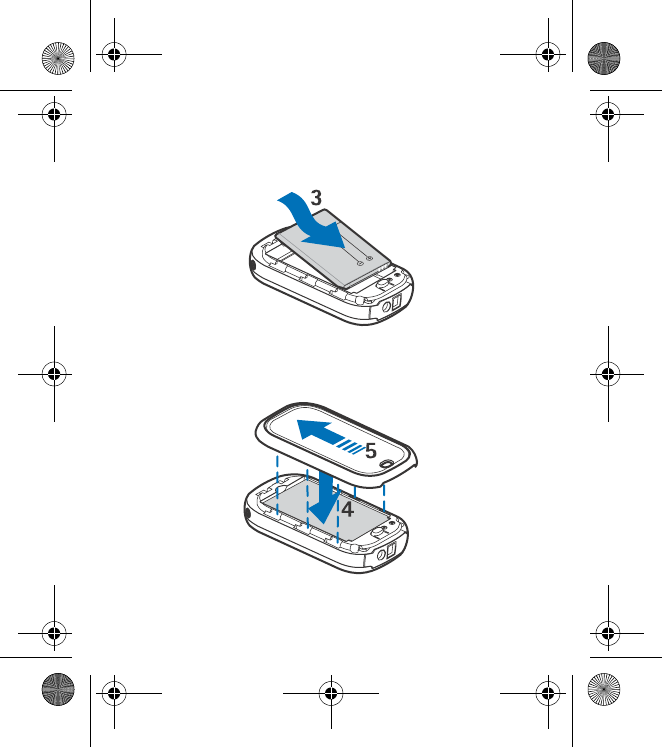
Getting started
16
2. Insert the battery (3).
3. Close the back cover of the GPS module (4), and slide
it upwards until its properly locked into its place (5).
LD1W_Ilmari_legal.fm Page 16 Thursday, October 7, 2004 9:50 AM
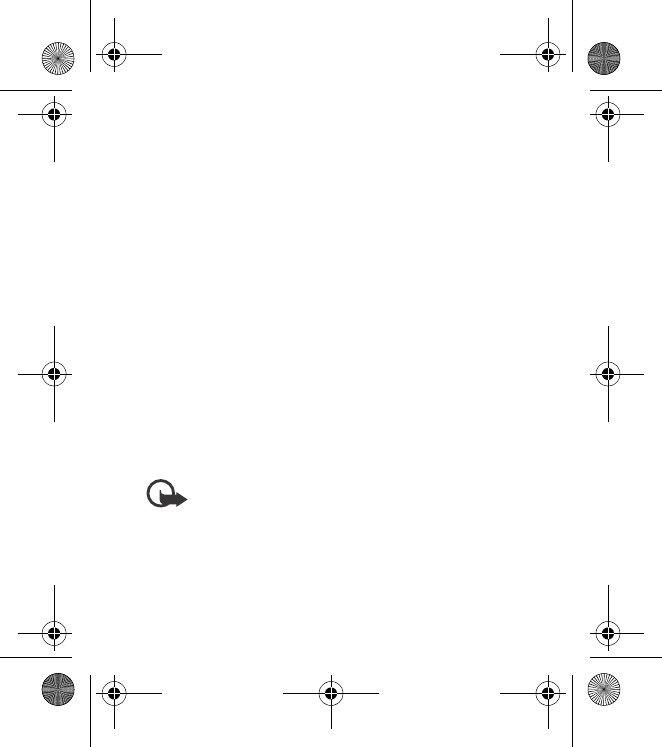
Getting started
17
■Charging the battery
To charge the battery:
1. Plug the charger into its connector (4) on the GPS
module. See Overview starting from page 12.
2. Connect the charger to a power outlet. Either the
green or red indicator light is blinking during charging
depending on whether the GPS module is turned on
(green) or off (red).
3. When the battery is fully charged and the power is on,
the green light is displayed continuously. When the
battery is fully charged and the power is off, the red
light stops blinking. Disconnect the charger from the
power outlet and the GPS module.
Important: When you disconnect the charger
cable of any enhancement, grasp and pull the
plug, not the cord.
When the battery is running out of power, the red
indicator light on the GPS module starts blinking in sets
LD1W_Ilmari_legal.fm Page 17 Thursday, October 7, 2004 9:50 AM
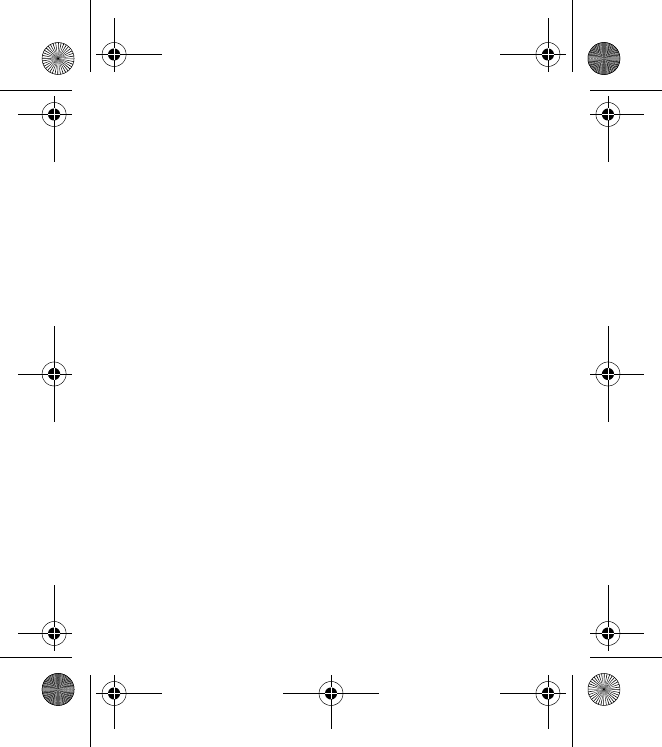
Getting started
18
of three every 15 seconds. Charge the battery as
described above.
■Pairing the GPS module with a
compatible phone
Before the GPS module can be used it has to be paired
with a compatible phone.
To pair the GPS module with a compatible phone:
1. Make sure that the phone is switched on.
2. Switch on the GPS module. Make sure that the battery
of the GPS module is charged.
3. Activate the Bluetooth connection from the phone.
For more information, see the user’s guide of the
phone.
4. Set the phone to search for Bluetooth devices as
instructed in the user’s guide of the phone.
5. Select the GPS module from the list (Nokia LD-1W).
LD1W_Ilmari_legal.fm Page 18 Thursday, October 7, 2004 9:50 AM
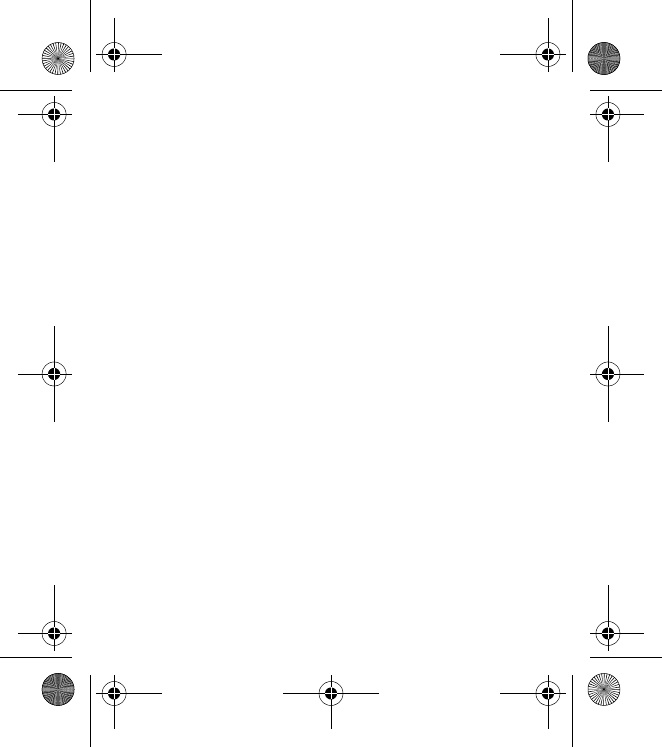
Getting started
19
6. Enter the Bluetooth passcode 0000 to pair and
connect the GPS module to the phone.
An active Bluetooth connection is displayed by a blue
indicator light on the GPS module. The GPS module
should now appear in the phone’s menu where you
can view the Bluetooth devices that are currently
paired with the compatible phone.
7. Start using the GPS module (see page 20).
Note also that with some applications you can handle
pairing and connecting from the application itself
without using the Bluetooth menu.
LD1W_Ilmari_legal.fm Page 19 Thursday, October 7, 2004 9:50 AM
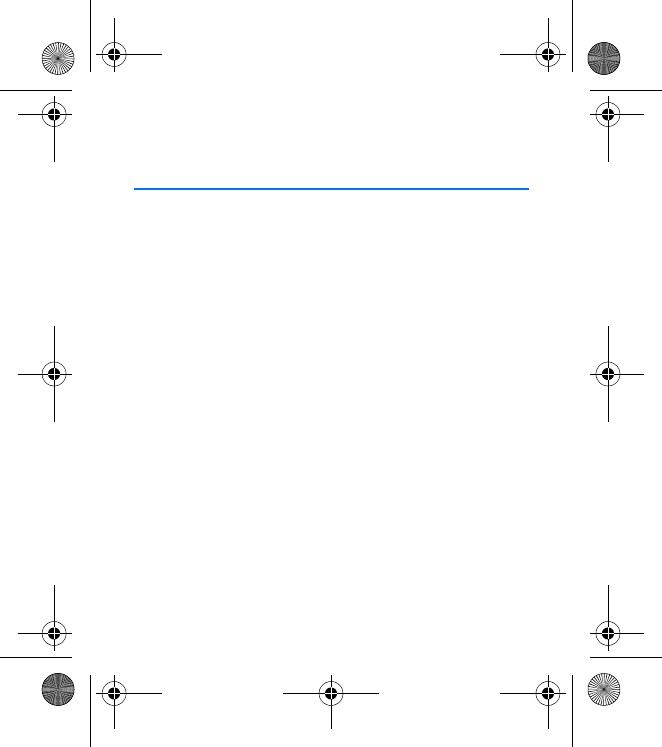
Using the GPS module
20
3. Using the GPS module
■Power key functions
The GPS module has one function key: power on/off.
However, the key has three different functions:
• one-second key press to switch unit power on and off
• ten-second key press to reset the unit
• short key press to check the unit status in night mode.
In some applications, the GPS module can be set into
night mode from the mobile phone. In night mode, the
indicator lights are always off when the power is on,
the Bluetooth connection active, and the GPS module
can determine its position. In the night mode, the
status of the GPS module can be checked by shortly
pressing the power key, whereby the indicator lights
appear briefly.
LD1W_Ilmari_legal.fm Page 20 Thursday, October 7, 2004 9:50 AM

Using the GPS module
21
When you turn the GPS module on, it takes some time for
the device to position itself. This time varies depending
on how long the GPS module has been turned off, and
how well it can receive the satellite signals. This time is
also longer if the battery has been removed. In optimal
conditions, this start-up positioning takes about one
minute.
■Carrying the GPS module
Wherever you use the GPS module, place it in the
protective case with the Nokia logo upwards. That way
you can better protect the GPS module from accidental
knocks, dust and splashes of water.
LD1W_Ilmari_legal.fm Page 21 Thursday, October 7, 2004 9:50 AM

Using the GPS module
22
To carry the GPS module around your neck, fasten the
neck strap to the protective case as shown in the picture
below.
■Using the GPS module with several
paired phones
The GPS module can be paired with up to 8 compatible
phones but connected to only one at a time. To pair the
GPS module with a compatible phone, follow the
instructions on page 18.
LD1W_Ilmari_legal.fm Page 22 Thursday, October 7, 2004 9:50 AM

Using the GPS module
23
The 8th pairing is always temporary, and it is replaced
when a 9th user tries to pair a phone with the GPS
module.
If you want to remove the existing pairings you can reset
the GPS module (see page 24).
■Disconnecting and reconnecting the
GPS module
The GPS module can be disconnected from the phone, if,
for example, you want to use another Bluetooth device
with the phone. To disconnect the GPS module, do one of
the following:
• Disconnect the GPS module from the application you
used to establish the connection.
• Switch off the GPS module, or the phone.
• Disconnect the GPS module from the phone’s
Bluetooth menu.
LD1W_Ilmari_legal.fm Page 23 Thursday, October 7, 2004 9:50 AM

Using the GPS module
24
• Move the phone more than 10 metres away from the
GPS module.
Note that you do not need to delete the pairing to
disconnect the GPS module.
To reconnect the GPS module to the phone, switch on the
GPS module and open the connection from the
application in the phone. Note that some applications
might recreate the connection automatically.
■Resetting the GPS module
You can reset the GPS module to its original settings, for
example, to reset the pairings. Resetting the GPS module
clears all of its settings, including pairing information.
To reset the GPS module, press the power on/off key in
off mode for 10 seconds. During resetting, the green and
red indicator lights are blinking alternately.
LD1W_Ilmari_legal.fm Page 24 Thursday, October 7, 2004 9:50 AM

Using the GPS module
25
■Troubleshooting
If you cannot connect the GPS module to a compatible
phone, proceed as follows:
• Make sure that the Bluetooth feature is activated on
the compatible phone.
• Make sure that the GPS module is switched on and
paired with a compatible phone.
•Make sure that you have disconnected the previous
Bluetooth connection from the phone.
• Check that the GPS module is within 10 metres of the
phone and that there are no obstructions or other
electronic devices between the two.
LD1W_Ilmari_legal.fm Page 25 Thursday, October 7, 2004 9:50 AM

Battery information
26
4. Battery information
Your GPS module is powered by a rechargeable battery.
Take good care of the battery and follow the guidelines
below.
• The battery can be charged and discharged hundreds
of times but it will eventually wear out. When the
operating time is noticeably shorter than normal,
contact your nearest qualified service facility and
change the battery.
• Use only batteries approved by the manufacturer and
recharge your battery only with the chargers
approved by the manufacturer. Unplug the charger
when not in use. Do not leave the battery connected
to a charger for longer than a week, since
overcharging may shorten its lifetime. If left unused a
fully charged battery will discharge itself over time.
LD1W_Ilmari_legal.fm Page 26 Thursday, October 7, 2004 9:50 AM

Battery information
27
• Temperature extremes can affect the ability of your
battery to charge.
• Use the battery only for its intended purpose.
• Never use any charger or battery which is damaged.
• Do not short-circuit the battery. Accidental
short-circuiting can occur when a metallic object
(coin, clip or pen) causes direct connection of the +
and - terminals of the battery (metal strips on the
battery), for example, when you carry a spare battery
in your pocket or purse. Short-circuiting the terminals
may damage the battery or the connecting object.
• Leaving the GPS module in hot or cold places, such as
in a closed car in summer or winter conditions, will
reduce the capacity and lifetime of the battery.
Always try to keep the battery between 15°C and 25°C
(59°F and 77°F). A GPS module with a hot or cold
battery may temporarily not work, even when the
battery is fully charged. The performance of batteries
LD1W_Ilmari_legal.fm Page 27 Thursday, October 7, 2004 9:50 AM

Battery information
28
is particularly limited in temperatures well below
freezing.
• Do not dispose of batteries in a fire!
• Discard batteries according to local regulations (e.g.
recycling). Do not dispose as household waste.
LD1W_Ilmari_legal.fm Page 28 Thursday, October 7, 2004 9:50 AM

Care and maintenance
29
Care and maintenance
Your Nokia Wireless GPS Module is a product of superior design
and craftsmanship and should be treated with care. The
suggestions below will help you to fulfil any warranty
obligations and to enjoy this product for many years.
• Keep all accessories out of the reach of small children.
• Even though the GPS module is splash-proof when placed
inside the protective case, try to keep it as dry as possible.
Precipitation, humidity and all types of liquids or moisture
can contain minerals that will corrode electronic circuits.
• Do not use or store the GPS module in dusty, dirty areas. Its
moving parts and electronic components can be damaged.
• Do not store the GPS module in hot areas. High temperatures
can shorten the life of electronic devices, damage batteries,
and warp or melt certain plastics.
• Do not store the GPS module in cold areas. When it warms up
to its normal temperature, moisture can form inside, which
may damage electronic circuit boards.
LD1W_Ilmari_legal.fm Page 29 Thursday, October 7, 2004 9:50 AM

Care and maintenance
30
• Do not attempt to open the GPS module other than as
instructed in this guide. Non-expert handling may damage
it.
• Do not drop, knock or shake the GPS module. Rough handling
can break internal circuit boards and fine mechanics.
• Do not use harsh chemicals, cleaning solvents, or strong
detergents to clean the GPS module.
• Do not paint the GPS module. Paint can clog the moving
parts and prevent proper operation.
If the GPS module is not working properly, take it to your nearest
qualified service facility. The personnel there will assist you and,
if necessary, arrange for service.
LD1W_Ilmari_legal.fm Page 30 Thursday, October 7, 2004 9:50 AM

Care and maintenance
31
FCC Notice - Nokia Wireless GPS Module
(LD-1W)
This device complies with Part 15 of the FCC Rules. Operation is
subject to the following two conditions:
1. This device may not cause harmful interference; and
2. This device must accept any interference received, including
interference that may cause undesired operation. This
equipment has been tested and found to comply with the limits
for a Class B digital device, pursuant to Part 15 of the FCC Rules.
These limits are designed to provide reasonable protection
against harmful interference in a residential installation. This
equipment generates, uses and can radiate radio frequency
energy and, if not installed and used in accordance with the
instructions, may cause harmful interference to radio
communications. However, there is no guarantee that
interference will not occur in a particular installation. If this
equipment does cause harmful interference to radio or television
reception, which can be determined by turning the equipment
off and on, the user is encouraged to try to correct the
interference by one or more of the following measures:
LD1W_Ilmari_legal.fm Page 31 Thursday, October 7, 2004 9:50 AM

Care and maintenance
32
• Reorient or relocate the receiving antenna.
• Increase the separation between the equipment and
receiver.
• Connect the equipment into an outlet on a circuit differ-
ent from that to which the receiver is connected.
• Consult the dealer or an experienced radio/TV technician
for help.
NOTE: Modifications not expressly approved by Nokia could void
the user's authority to operate the equipment.
LD1W_Ilmari_legal.fm Page 32 Thursday, October 7, 2004 9:50 AM